Indoor gardening is a growing trend in urban areas that has seen an explosive growth during the pandemic. Not everyone has a patio to cultivate their own herbs and vegetables, so more and more city dwellers choose indoor gardening systems that bring the produce into the home together with an array of benefits for their health, wallet and the future of the planet. If you have the inclination to grow your own greens and get the satisfaction of successfully harvesting your own food, there are many solutions available today.
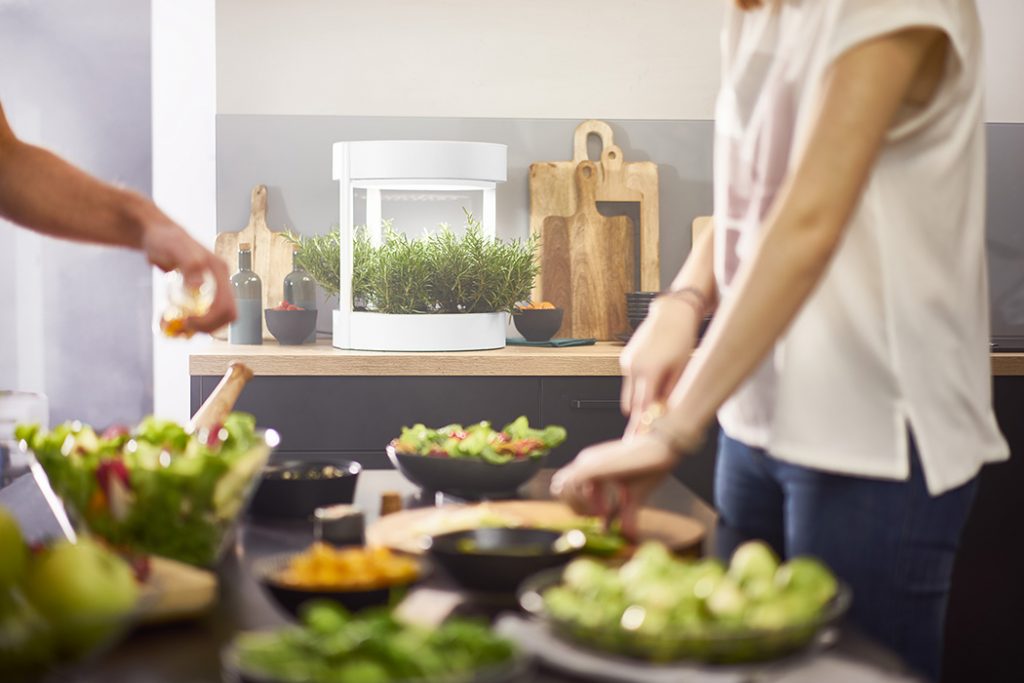
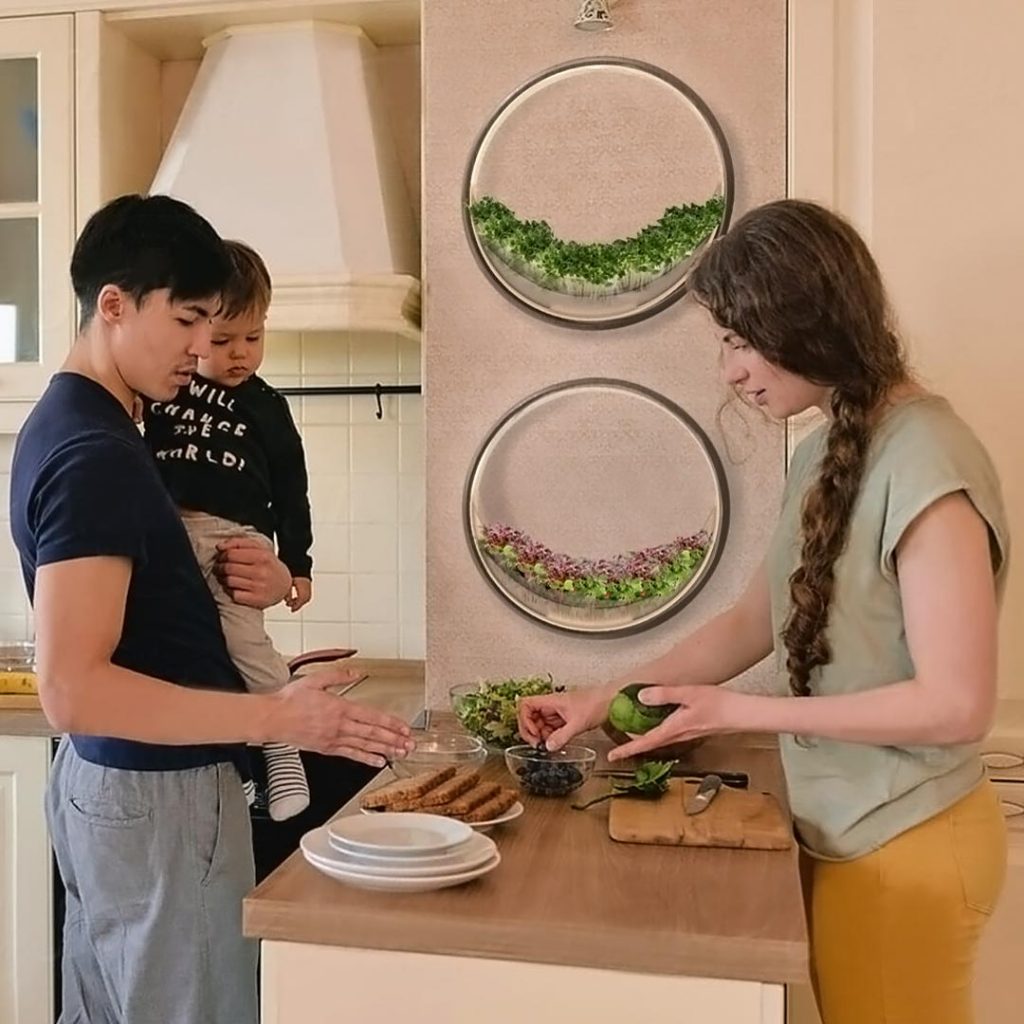

Solace by Kennedy Castelli
Solace by Savannah College of Art and Design graduate Kennedy Castelli has a simple yet futuristic aesthetic. Its circular shape increases the functionality of the product by utilizing available space instead of spreading out further, while the growing light doubles as an ambient light. Besides, the wall-mounted appliance saves countertop space.
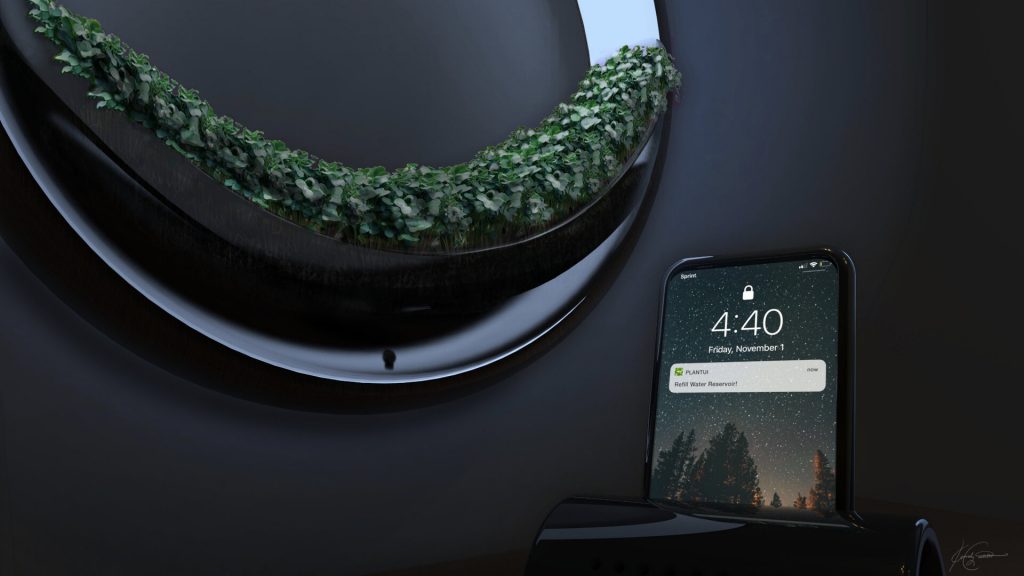


Solace by Kennedy Castelli
The system uses wick moisture with a biostrate grow mat and automatic lighting, which makes it easy for beginners to start their home gardens. An integrated app intuitively guides the user through germination, growing and harvesting phases. The appliance features a detachable rechargeable battery.
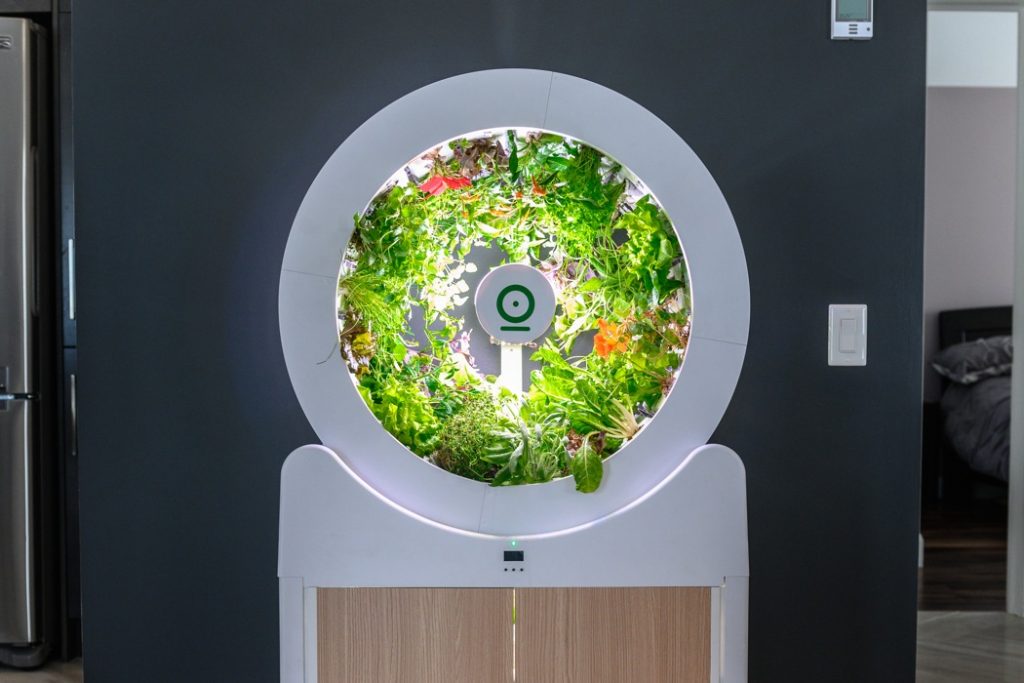

OGarden by Pierre Nibart
There are many factors to consider before you choose an indoor gardening system – efficiency of the system, soil or soilless, how often do you have water the plants, the variety you can grow. OGarden by Canada-based designer Pierre Nibart is an indoor gardening system that allows to grow 90 plants simultaneously, not only microgreens but vegetables and fruits as well. The device features a unique automatic watering system that controls the plants’ water intake.
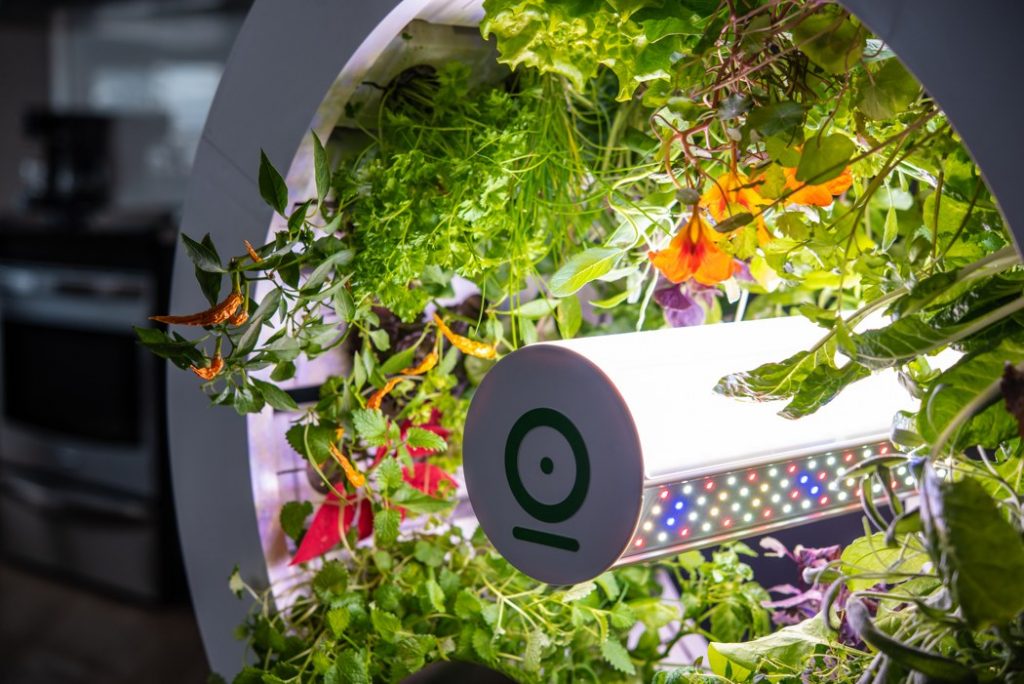
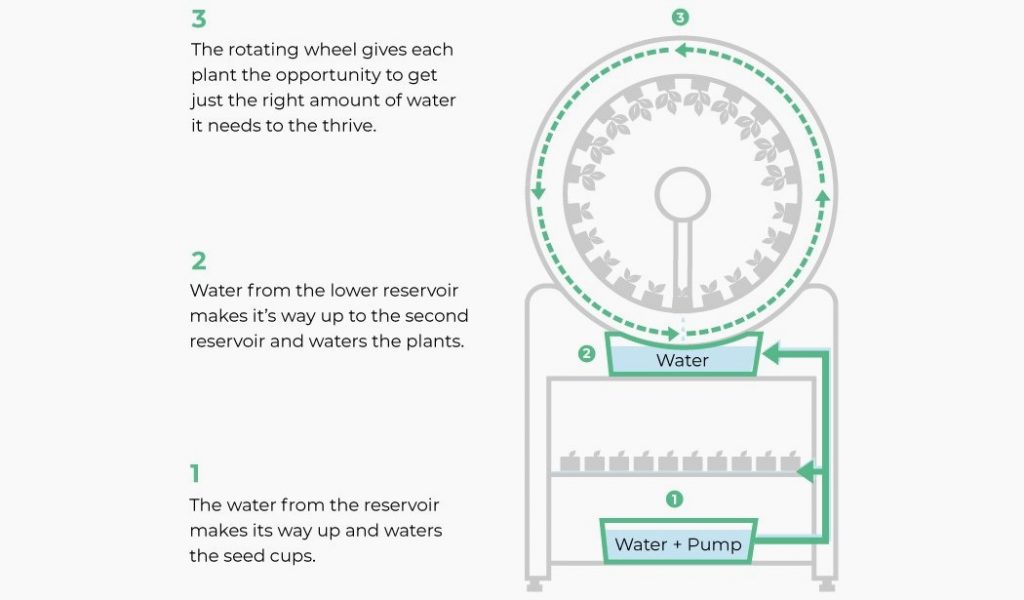
OGarden by Pierre Nibart
The rotating wheel gives each plant the optimum amount of time to take in the water, while a secondary tank coupled with a pump caters for the developing seedlings in the cabinet below. With 90 spots available, the user can have 2-4 large vegetables a day. The process of growing the produce is as simple as planting a seed and replenishing the reservoir with water once a week.
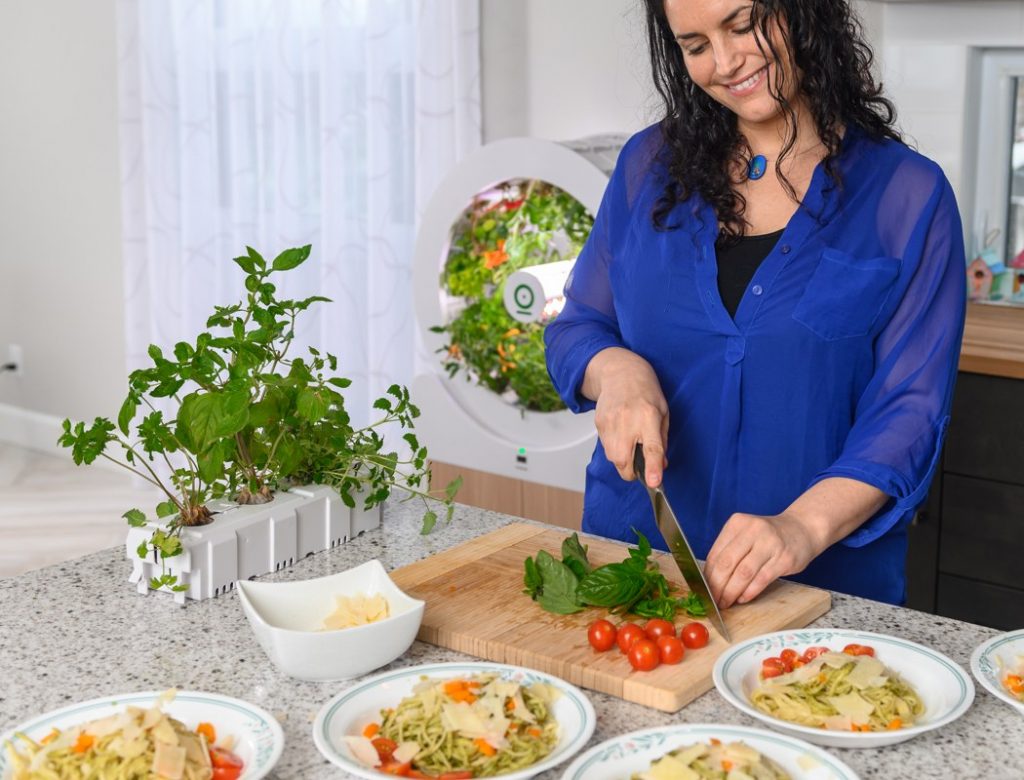
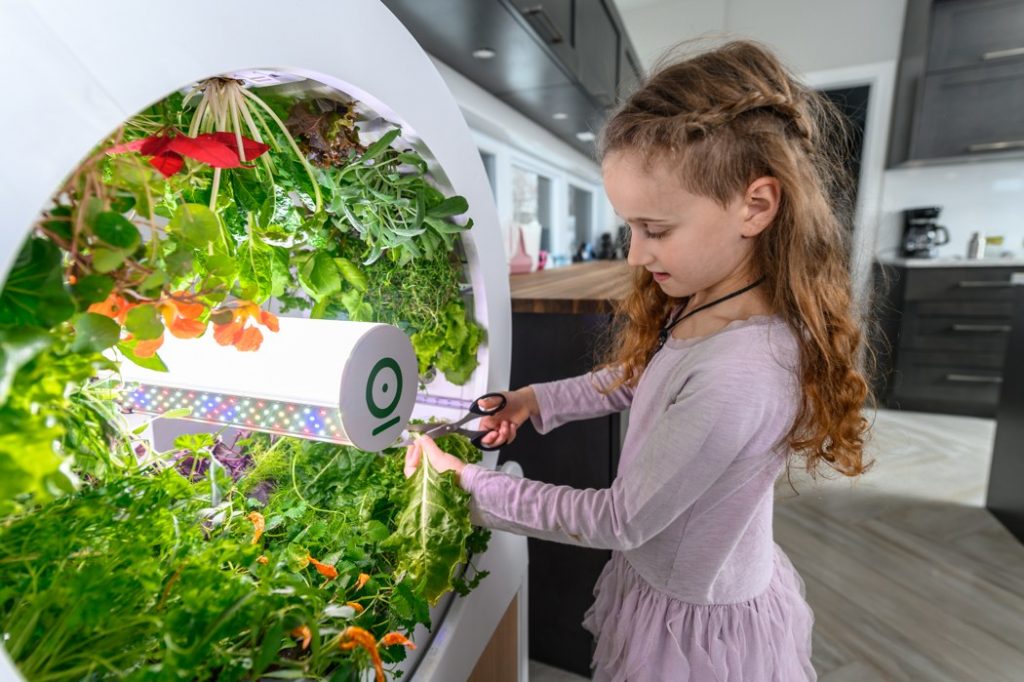
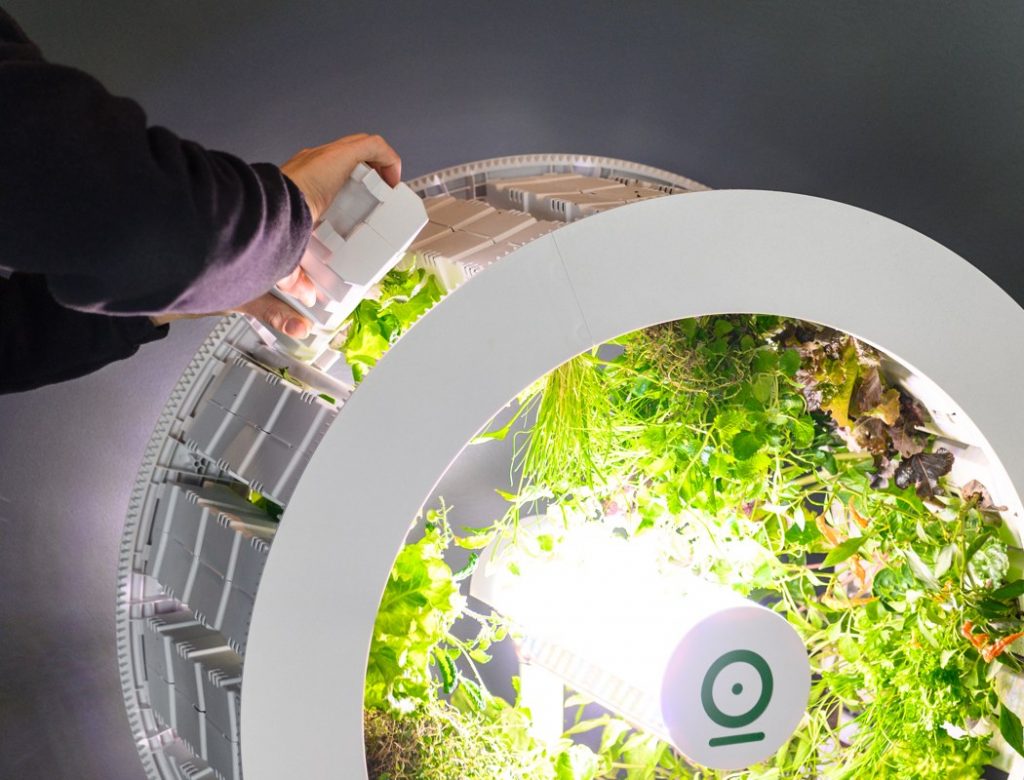
OGarden by Pierre Nibart
Automatic low energy consumption LED’s simulate the perfect amount of sunlight to optimize growth and will automatically turn on and off for convenience. Taking only 120 watts of power, OGarden can help save up to 80% on vegetables expenses, which allows to cut down the grocery bill.
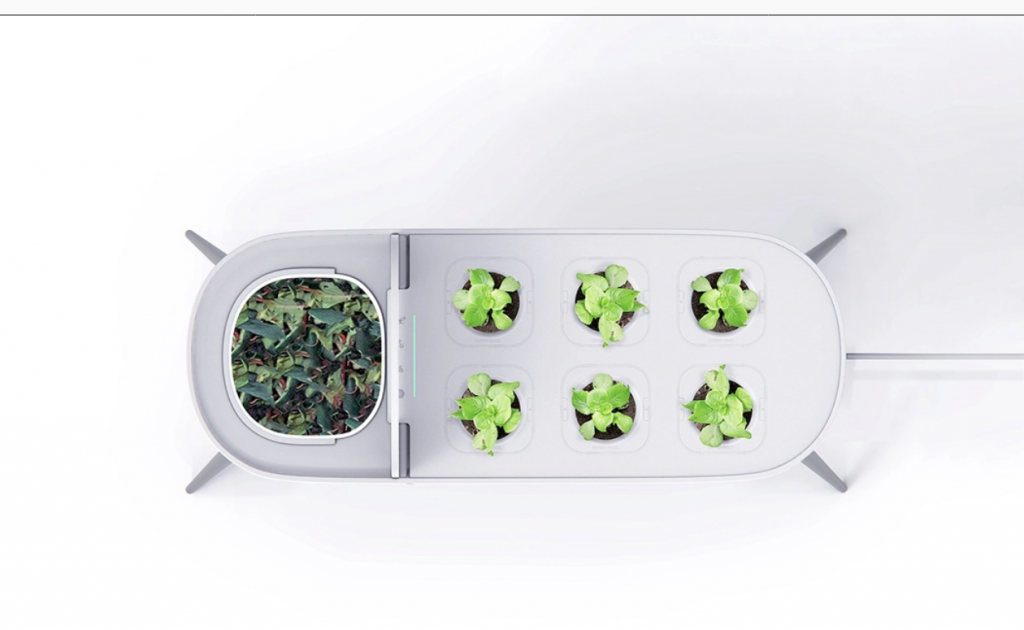

The Sustainable Family Farm by Chaozhi Lin
The Sustainable Family Farm by Tokyo based product designer Chaozhi Lin combines a self-sustaining indoor garden with a miniature composter making gardening into a fun experience for the family. Its low maintenance process makes it as easy as possible for anyone to grow herbs or small vegetables by simply dumping compostable scraps into the plant incubator to fertilize the soil and adding seeds and worms to get started. The appliance is comprised of a container for food waste that turns leftover food scraps into compost for fertilizer and three soil pots.

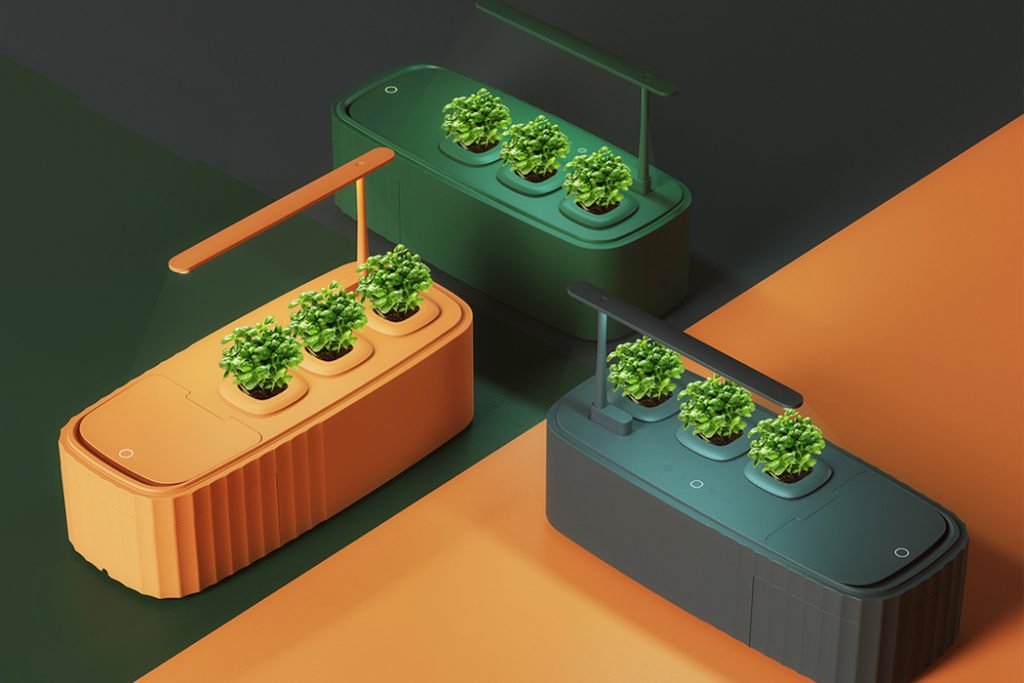
Kagura by Chaozhi Lin
The gardening system is completely self-sustaining and conveniently sized to fit into any kitchen or living space. To make the experience more fun, the planter features a companion app, which treats gardening as a Farmville-like game, showing the stages of plant growth as “levels” for your real-life veggies.
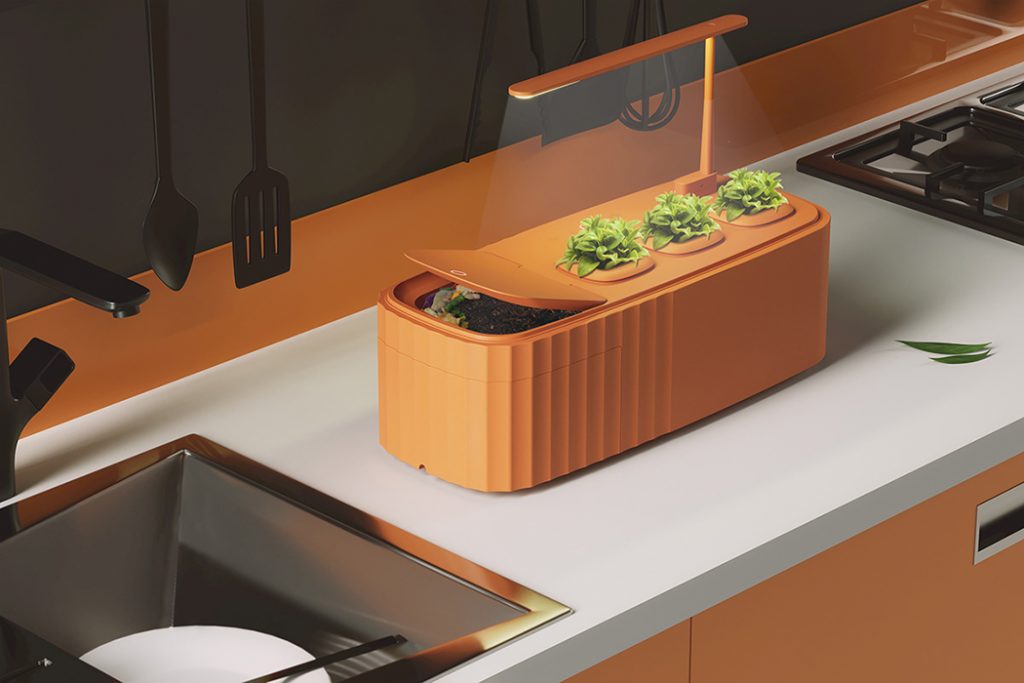
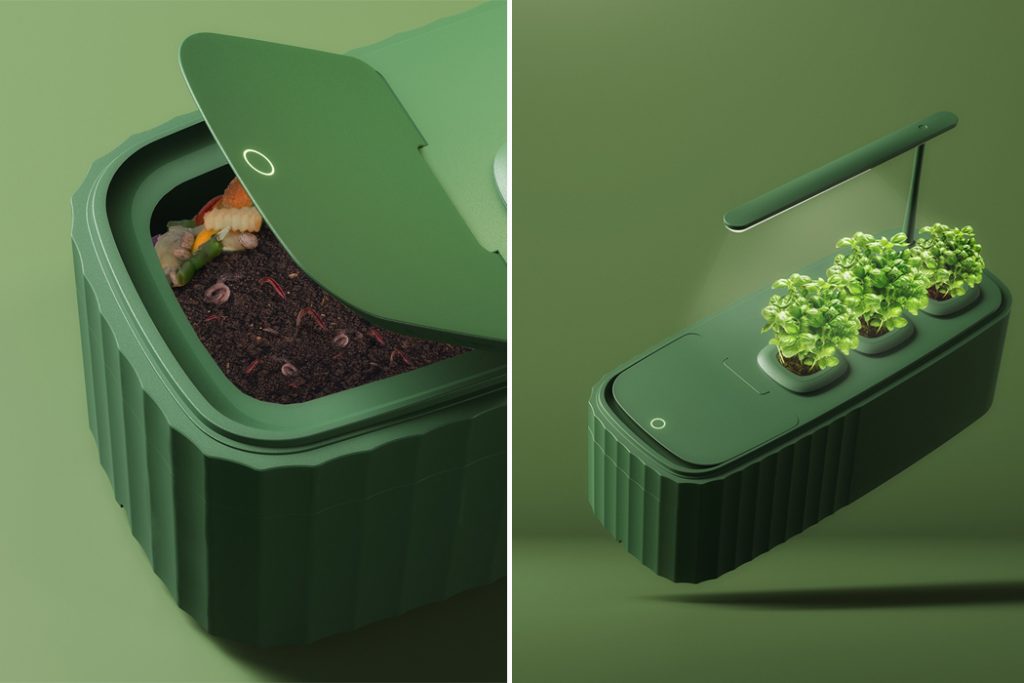
Kagura by Chaozhi Lin
The project is an upgrade of Lin’s Kagura system, which is characterized an elevated light fixture situated directly above the garden pots providing the mini garden with nourishing light-energy.

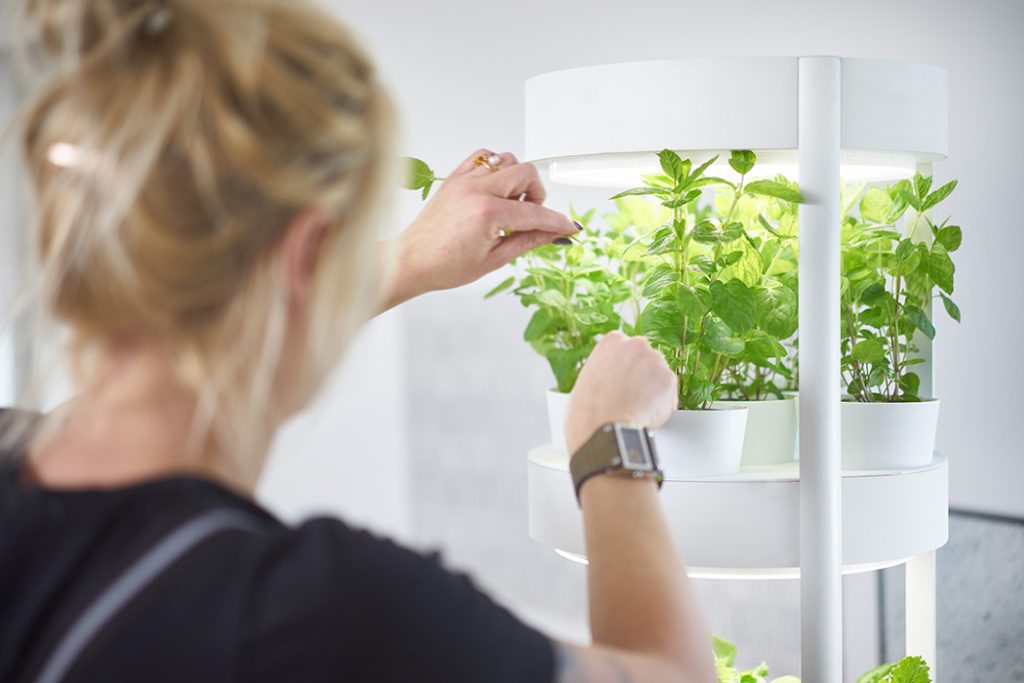
Verdeat by Robert Paluch (also header image)
Verdeat by Robert Paluch is a modular fully automatic gardening system created from environment-friendly materials that can grow up to 76 plants, from microgreens and herbs to regular soil-based pot plant, such as lemons, peppers, cherry tomatoes. The appliance uses a soilless, organic plant cultivation system and smartly irrigates and provides nutrition to vegetables and herbs. Using the accompanying app, the modular garden automatically adjusts the water, energy, and nutrients required, without unnecessary wastage. The system can be self-sustainable for 1 to 3 weeks, depending on what is growing.
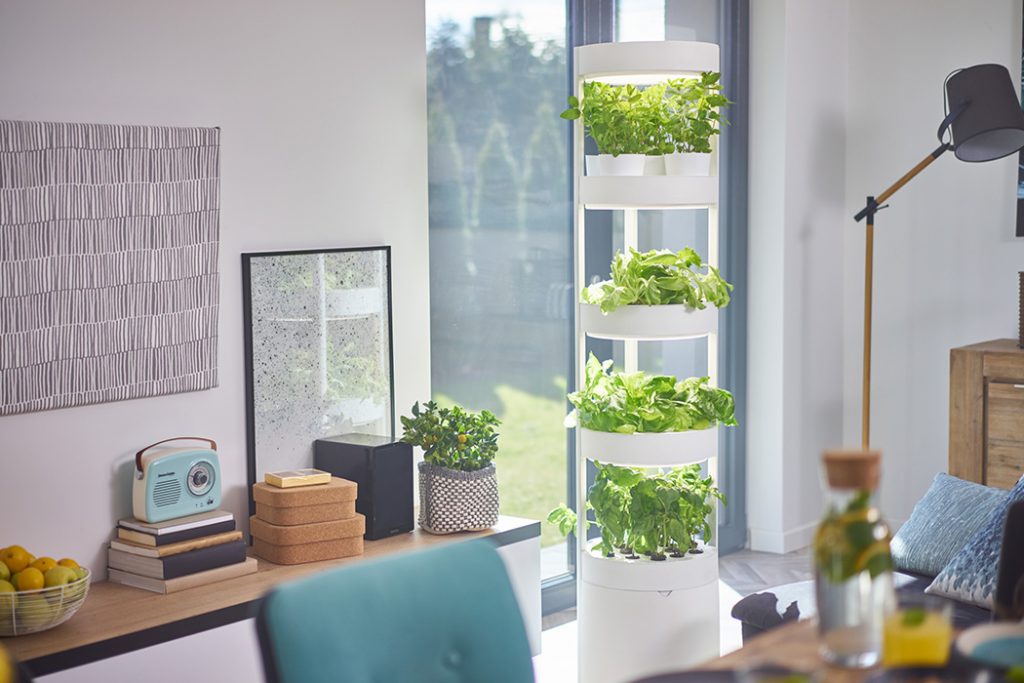
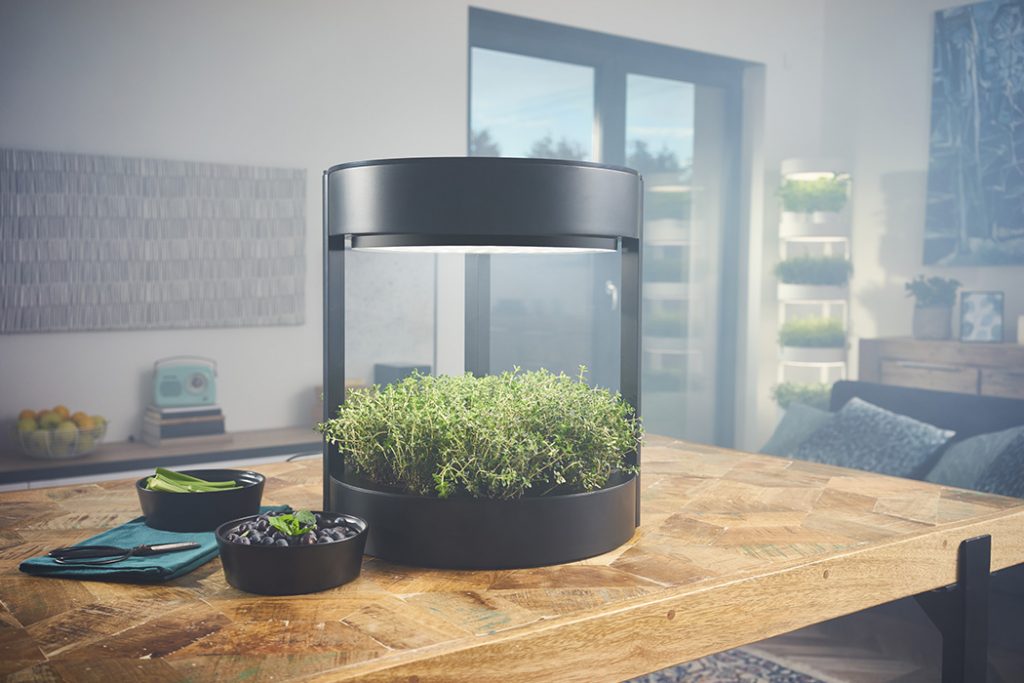
Verdeat by Robert Paluch
Manufactured with 95% recycled materials, Verdeat consists of modular trays with slots to plant the seeds along with a soil-free natural substrate (e.g. coconut fiber) and is available in three size options, from a small unit for kitchen countertops to a larger system, ideal for medium apartments and houses.
As a bonus, the plants act as air purifiers and have a therapeutic effect on your overall wellbeing, while the near-natural light source not only helps the plants grow but also acts an ambience lighting for your home.